Cold Chain Logistics: Management Challenges & Solutions
The supply chain is a term used to describe all the components required to transport goods from beginning to end, from production to the end...
7 min read
 BUKU Marketing
:
Sep 6, 2023 1:00:00 PM
BUKU Marketing
:
Sep 6, 2023 1:00:00 PM

Direct-to-consumer (DTC) fulfillment is a strategy that helps brands sell and deliver their products directly to customers more efficiently while bypassing traditional intermediaries.
Table of Contents
1. Benefits of DTC Fulfillment
2. Challenges & Solutions of DTC
3. Customer Experience in DTC Fulfillment
4. Order Management in DTC Fulfillment
6. Warehousing & Fulfillment Centers
8. Technology & DTC Fulfillment
9. Is the DTC Process for You?
This approach offers numerous advantages. Some advantages include cost reduction, increased control over sales, faster delivery, and the chance to establish direct and more authentic customer connections. All these lead to increased profits.
But it also presents challenges such as complex logistics and slow delivery times. These challenges make fulfillment more difficult to manage when not done right.
In 2020 and 2021, respectively, the global retail eCommerce market rose by 26% and 16%, reaching $5 trillion. In 2022, estimates placed it close to $5.7 trillion dollars globally.
Direct-to-consumer eCommerce platforms, which showed growth of 45% in 2020, significantly contributed to the startling rise.
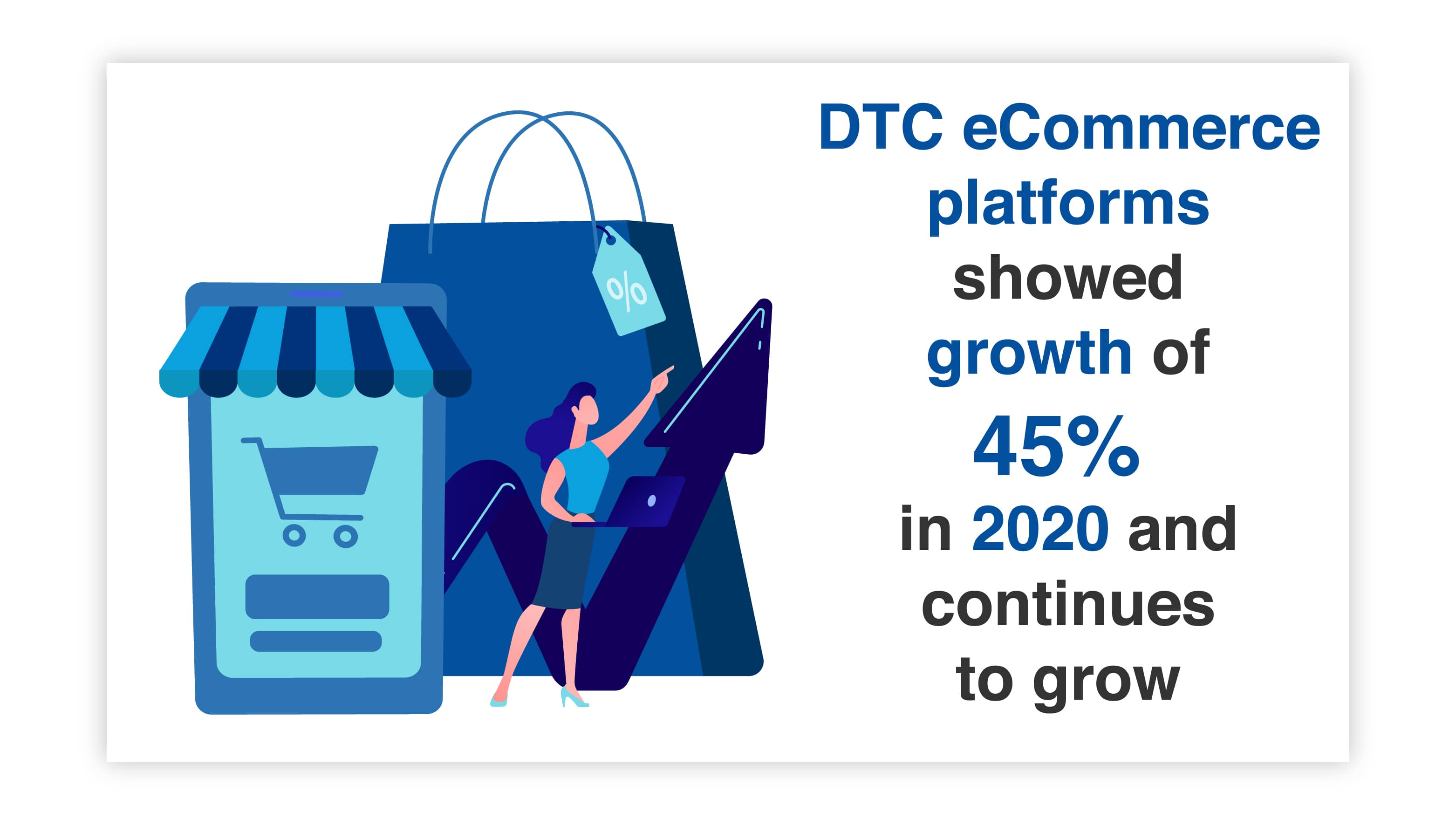
Even factoring in COVID growth, eCommerce will continue to grow, and DTC fulfillment with it.
One of the main benefits of DTC fulfillment is more control over sales and a more cost-effective approach compared to traditional retail methods.
With DTC fulfillment, brands can directly access customers and tailor their strategies without retailer intervention. This
Another benefit is that DTC fulfillment eliminates the need for intermediaries. An intermediary would be wholesalers and retailers. Eliminating them can significantly reduce overhead costs.
By cutting out these middlemen, brands can offer their products at lower prices to consumers while still making a profit. This cost-effective approach is huge for small businesses and startups.
It eliminates entry barriers and allows them to compete with larger retailers on a level playing field.
DTC fulfillment provides brands with more direct access to customer data and is possibly the most complex to take advantage of, but most beneficial. Through online platforms and eCommerce systems, brands can collect valuable insights into customer behavior, preferences, and purchasing patterns.
Brands can use this data to enhance marketing strategies. Not only that, but it can improve product offerings and personalize and improve the customer experience. By leveraging this information, brands can build stronger customer relationships and a loyal customer base.
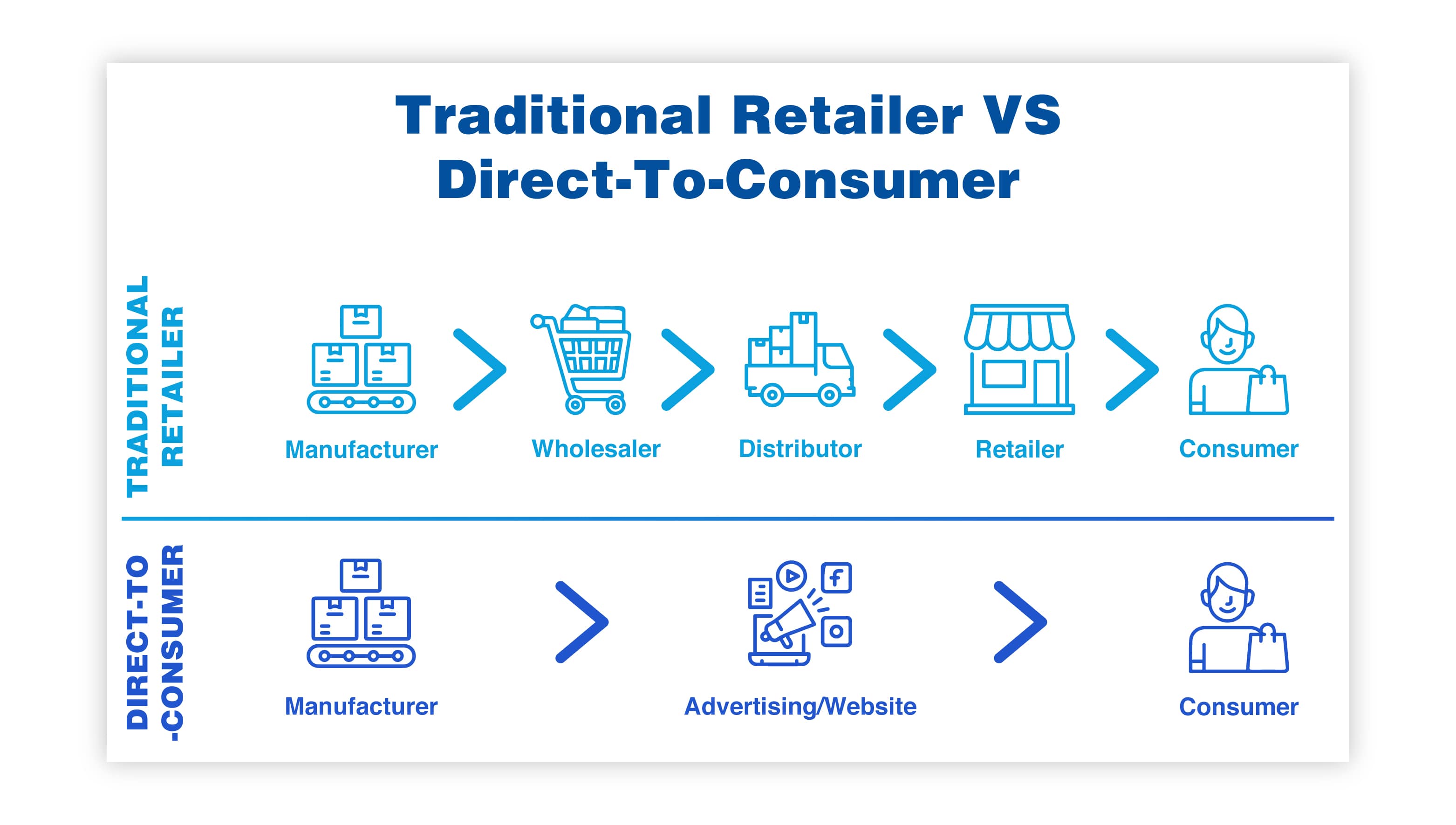
Challenges encountered in the direct-to-consumer (DTC) model can be effectively addressed through technologies and processes.
One common challenge in DTC fulfillment is managing complex logistics. With increased online orders, brands must efficiently move products from the warehouse to the customer's doorstep.
Another challenge is the increased order volume that comes with DTC fulfillment. Brands must be prepared for spikes in demand and have the necessary resources to meet customer expectations, such as having enough inventory and packaging materials.
Advanced technologies can help automate and optimize fulfillment processes to handle higher order volumes effectively.
Slow delivery times can also be a challenge in DTC fulfillment. Brands need to ensure timely and reliable delivery to maintain customer satisfaction.
This can be achieved by partnering with reliable shipping carriers and implementing tracking systems to monitor delivery progress. Additionally, brands can optimize their fulfillment network by strategically locating warehouses closer to their target customers, allowing faster and more cost-effective shipping.
Direct-to-consumer (DTC) fulfillment businesses can leverage data analytics to enhance customer insights, optimize shipping costs, and acquire new customers through social media and email marketing. Below are some strategies to achieve these goals.
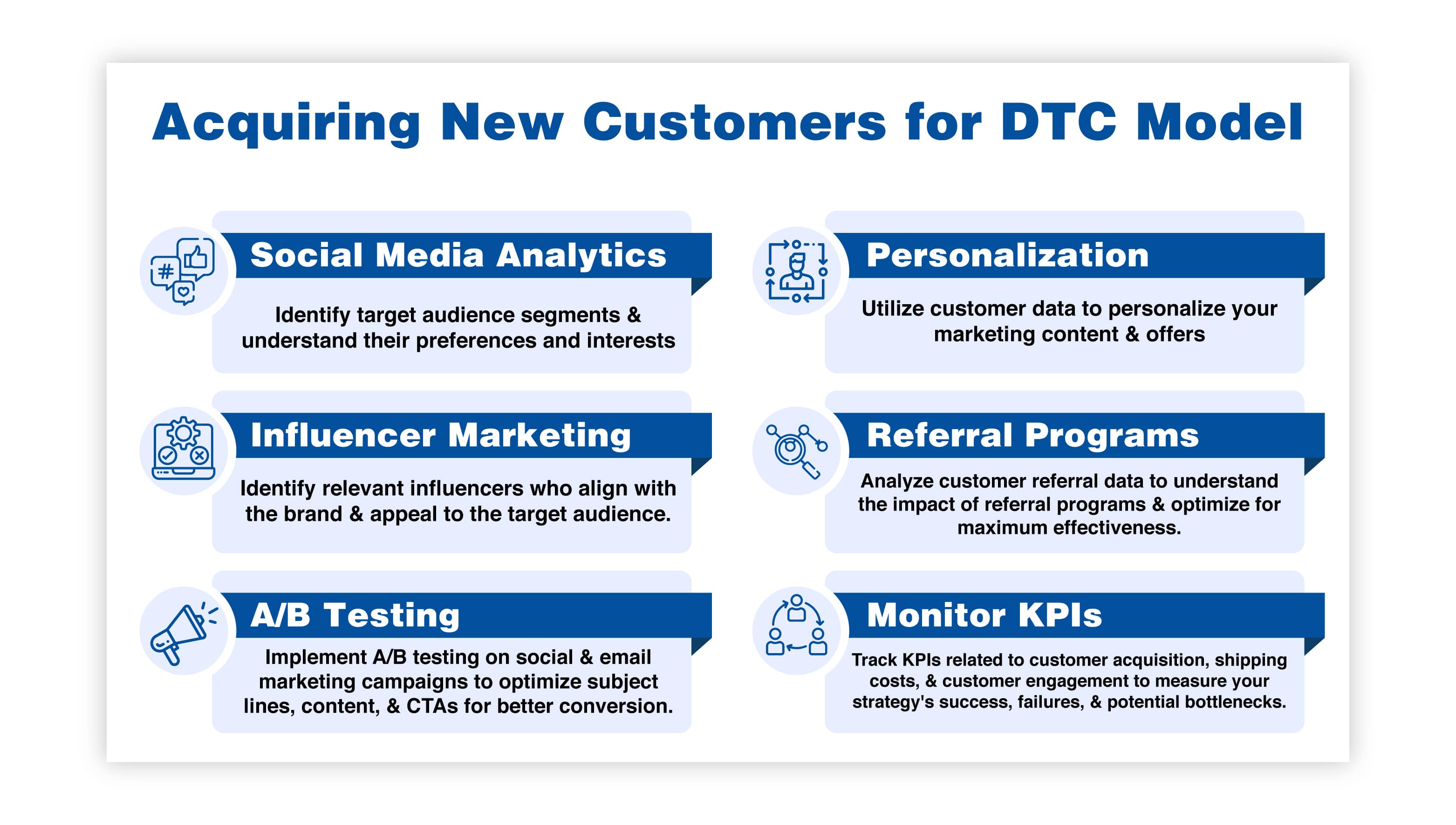
Acquiring New Customers through social media and email marketing can be done with the following:
Optimizing the customer experience is the best aspect of DTC fulfillment. Optimization helps you build brand loyalty and drive repeat purchases.
In the direct-to-consumer model, brands can establish direct customer relationships, allowing for a more personalized buying experience. strategies, such as personalized product recommendations, customized packaging, and proactive customer support
One of the critical advantages of DTC fulfillment is the ability to gather and use customer data to enhance the overall experience. By analyzing customer data, brands can create targeted marketing campaigns and offer personalized discounts or promotions.
One example of this could be an abandoned cart offer. This level of personalization establishes a sense of exclusivity and fosters a deeper connection between the brand and the customer.
Fast delivery is another crucial aspect of the customer experience in DTC fulfillment. Customers expect fast and reliable shipping.
Brands need to invest in efficient shipping processes to meet these expectations 25% of DTC brands offer next-day and two-day delivery, which is difficult to manage without a streamlined fulfillment process.
Most businesses can only put something like this together with a DTC partnership. Brands that consistently deliver on their promises will satisfy their customers and increase the likelihood of repeat purchases.
Brands must strive to create a personalized customer experience while ensuring efficient and timely delivery. By focusing on these aspects, brands can build strong brand loyalty, encourage repeat purchases, and ultimately drive business growth in the DTC space.
Order management is crucial to the DTC fulfillment process. It ensures efficient and accurate processing, tracking, and delivery of customer orders. Order management involves systematically handling orders from when the customer clicks "buy now" to their final delivery at the doorstep.
Order validation involves reviewing the customer's order details to ensure accuracy and completeness. Customer details can include product selection, quantity, and shipping information.
Inventory allocation then determines the availability of the ordered items and reserves them for the customer's order. The picking and packing stage involve retrieving the products from the warehouse, packaging them securely, and preparing them for shipment.
The selection of shipping carriers is an important decision that affects the delivery's cost, speed, and reliability. DTC brands can choose carriers based on their specific needs and requirements.
Efficient inventory management is critical to successful DTC fulfillment, ensuring accurate tracking and availability of products throughout the order fulfillment process. You monitor stock levels to meet customer demand while minimizing costs and maximizing profitability.
One key aspect of inventory management in DTC fulfillment is accurate forecasting. By analyzing historical sales data, market trends, and customer behavior, brands can predict future demand and adjust their inventory levels accordingly.
Real-time inventory tracking is another vital aspect of efficient inventory management. Brands need visibility into their stock levels across multiple channels, including online stores, brick-and-mortar locations, and distribution centers.
Effective inventory management also involves implementing replenishment strategies, such as just-in-time (JIT) or vendor-managed inventory (VMI). JIT ensures that products are delivered to the fulfillment center or store in time to meet customer demand, minimizing storage costs.
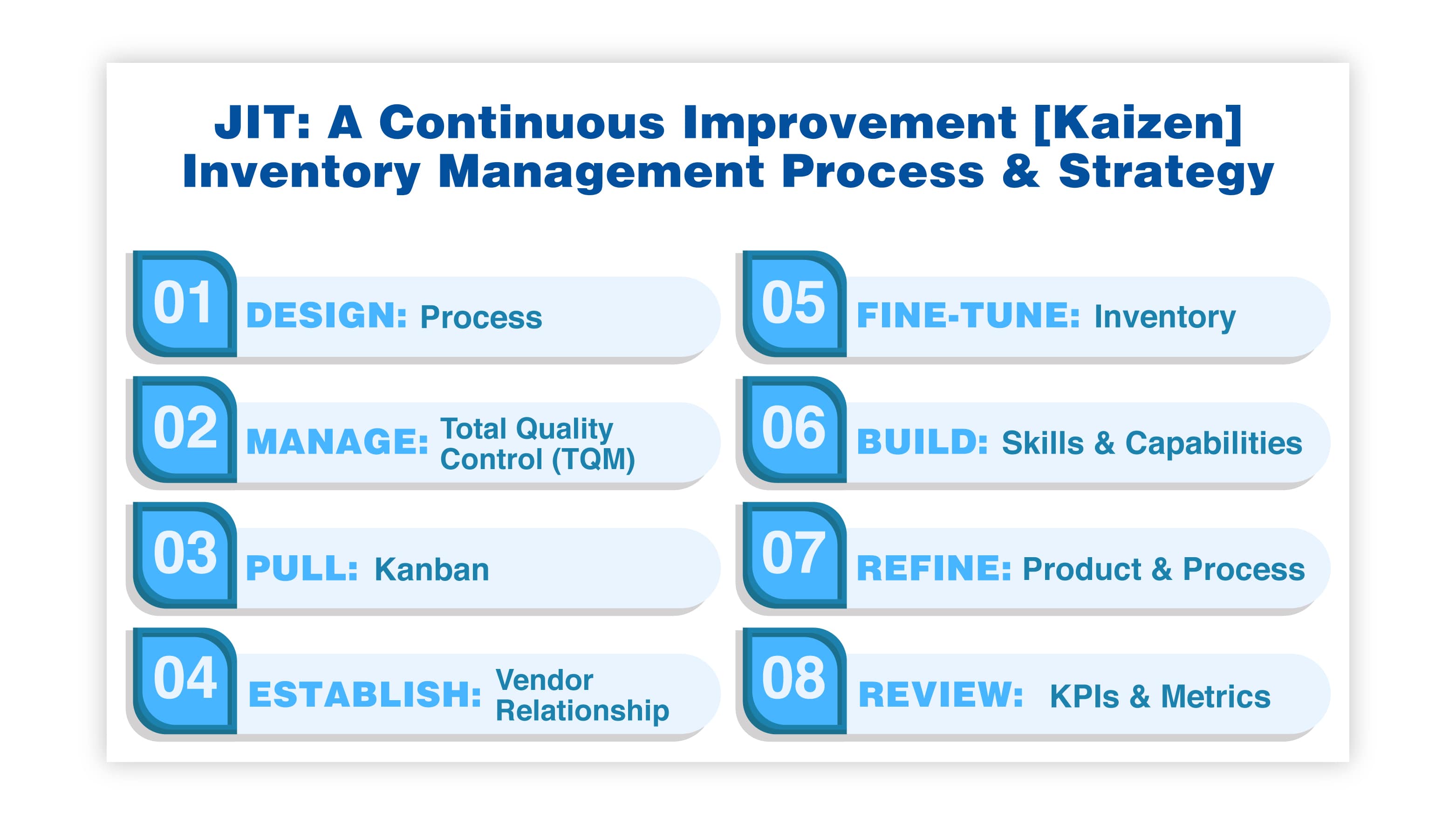
Conversely, VMI involves the supplier. VMI takes responsibility for inventory levels and restocking based on real-time sales data.
By implementing efficient inventory management practices, brands can ensure they have the right products available at the right time, optimize their supply chain operations, and provide a seamless customer experience.
Warehousing and fulfillment centers play a vital role in DTC fulfillment by serving as the hub for products before they are shipped. These centers are strategically located to ensure efficient shipping and delivery to customers nationwide or even globally if you have that reach.
One of the key advantages of having warehousing and fulfillment centers in the DTC model is the ability to scale operations easily.
As product demand increases, brands can quickly expand their storage capacity and workforce in these centers to meet customer needs without investing in additional infrastructure or resources.
Furthermore, these centers enable brands to streamline their order fulfillment processes. From receiving inventory and managing stock levels to picking, packing, and shipping orders, warehousing and fulfillment centers have advanced technology and efficient workflows to ensure accuracy and timeliness.
DTC brands can focus on their core competencies by leveraging warehousing and fulfillment centers. Leverage allows you to leave the logistics and fulfillment tasks to experts in the field.
You can allocate resources more effectively and concentrate on delivering high-quality products and exceptional customer experiences.
Shipping and logistics play a critical role in the direct-to-consumer (DTC) model by ensuring the timely and cost-effective delivery of products to customers.
In the DTC fulfillment process, once orders are received, they must be appropriately packaged and shipped to the customers.
In the US, there are between 110,000 and 120,000 DTC businesses. In contrast, there are almost 800,000 eCommerce sites, making DTC a growing 13% of the market.
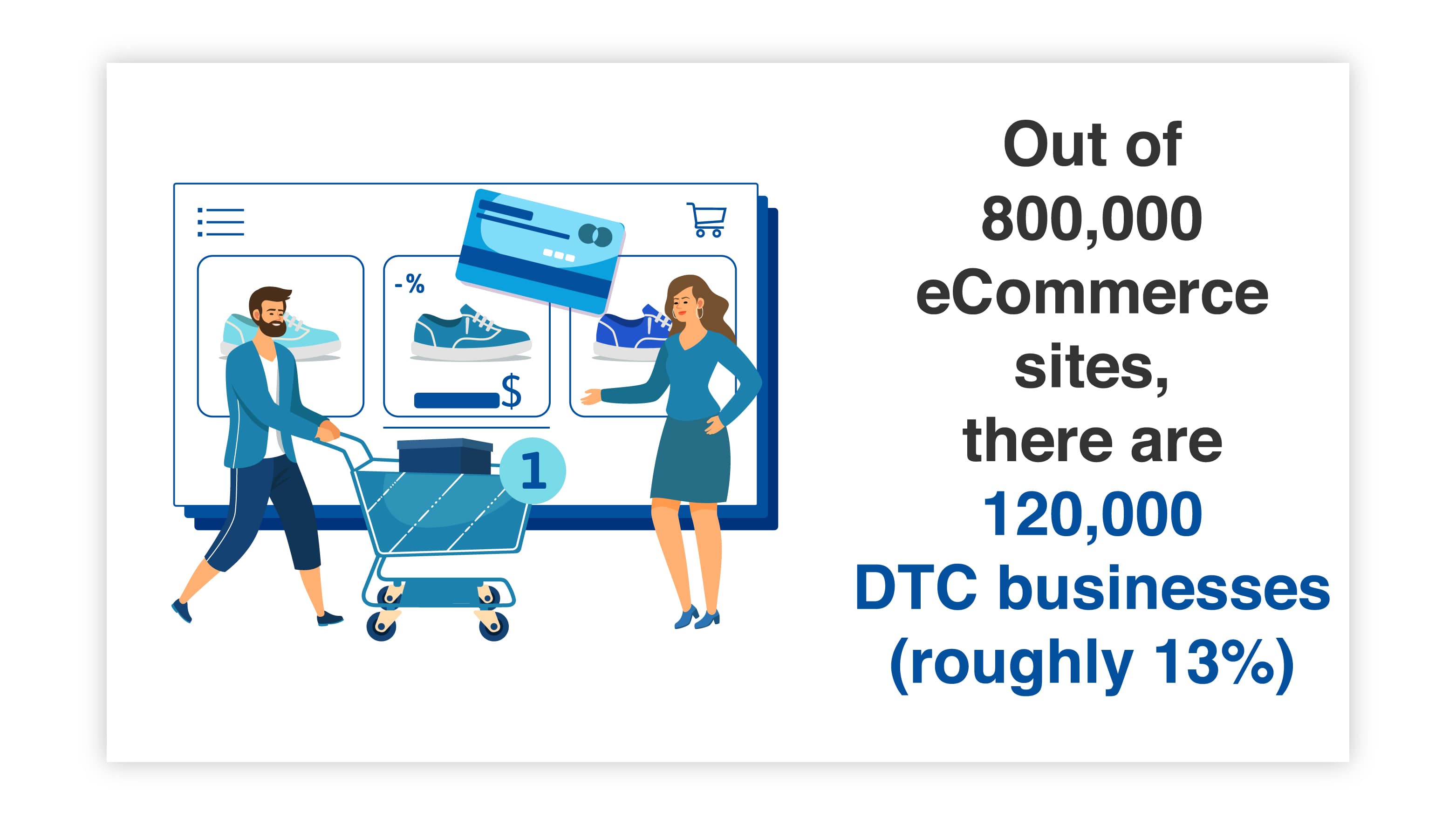
A key advantage of DTC fulfillment is its flexibility in choosing shipping carriers and methods. Brands can select the best options based on cost, speed, and reliability. This allows them to tailor the shipping experience to meet customer expectations and preferences.
Some other advantages include:
However, shipping and logistics in DTC fulfillment are not without challenges. DTC logistics can be more complex than traditional logistics, as sellers need to understand their customers' shipping preferences and needs.
The complexity of managing a large volume of orders, especially during peak seasons, can strain the supply chain. Additionally, slow delivery times can lead to customer dissatisfaction.
To address these challenges, brands can leverage advanced technology and logistics solutions from third-party logistics providers (3PLs). These solutions help streamline the shipping process, optimize order management, and improve efficiency.
%20in%206%20steps.jpg?width=3125&height=1771&name=Third%20Party%20Logistics%20(3PL)%20in%206%20steps.jpg)
Technology is essential for the DTC model. Efficient tech use enables brands to streamline their fulfillment processes and enhance efficiency. With the advancement of technology, brands have access to various tools and software that help them manage their inventory.
One key technology used in DTC fulfillment is inventory management systems. These systems give brands real-time visibility into their stock levels, ensuring they can promptly and accurately fulfill customer orders. By automating inventory management, brands can avoid stockouts or overstocks, improving customer satisfaction and reducing costs.
Order processing software is another essential technology used in DTC fulfillment. This software can automate the order fulfillment process, from order validation to packing and shipping, while you focus on the customer. It helps brands manage high order volumes efficiently. The right software ensures that orders are fulfilled accurately and promptly.
Landing pages are also essential to DTC fulfillment, as you can create a well-made landing page on a DTC site like Amazon quickly and efficiently. This is important for things like one-off campaigns.
Creating a microsite, yourself can be more complex and time-consuming when looking to market a product 92% of consumers are 61% of consumers head to Amazon first when shopping for an item.
DTC brands also rely on shipping software (like BUKU's IntelliRate) and integrations with shipping carriers to optimize their shipping operations. This technology lets brands compare shipping rates, choose the most cost-effective methods and tracking numbers.
By leveraging technology, brands can offer their customers faster and more reliable shipping options.
Technology empowers DTC brands to streamline their fulfillment processes, reduce costs, and provide a better customer experience. By leveraging the right technology solutions, brands can stay competitive in the DTC space and meet the evolving demands of their customers.
Direct-to-consumer fulfillment offers numerous benefits to brands, including lower costs, increased control over sales, and direct customer relationships. However, it also presents challenges like complex logistics and potential slow delivery times.
Effective integration with eCommerce platforms, efficient order and inventory management, and streamlined shipping and logistics processes are crucial for successful DTC fulfillment. By prioritizing customer experience and leveraging technology, brands can optimize their DTC fulfillment strategies and enhance operational efficiency.
DTC fulfillment is a complex process, but it can be enriching for businesses that do it well. If you are willing to put in the time and effort to build your system correctly, the long-term benefits are well worth the investment.

The supply chain is a term used to describe all the components required to transport goods from beginning to end, from production to the end...

A smart warehouse is a large building where raw materials and other consumer goods are stored using machines, computers, comprehensive software, and...

Direct-to-consumer (DTC) fulfillment is a strategy that helps brands sell and deliver their products directly to customers more efficiently while...